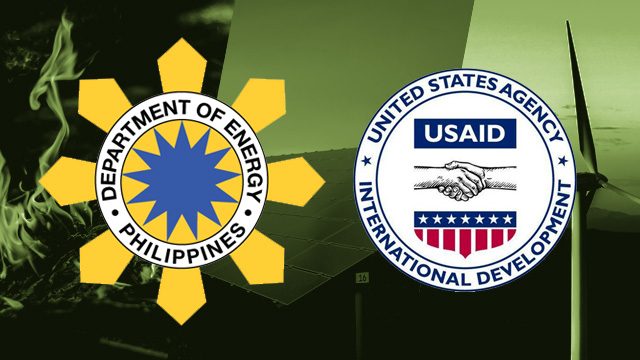SUMMARY
This is AI generated summarization, which may have errors. For context, always refer to the full article.

MANILA, Philippines – The Department of Energy (DOE) has teamed up with United States Agency for International Development USAID to improve the country’s energy mix and supply reliability.
DOE secretary Alfonso Cusi recently met with members of the USAID’s Building Low Emission Alternatives to Develop Economic Resilience and Sustainability (B-LEADERS) for a discussion that centered on the formulation of the country’s ideal fuel mix and energy reserve requirements.
“Our main concern now is to increase the availability of quality, reliable, secure and affordable supply, We are also looking at establishing an ‘army of reserves’ so that when there is lack of supply, we have something to rely on,” Cusi on August 12, after the meeting.
The energy chief said that a team will be formed to specifically handle these tasks in coordination with USAID and that an initial study should be conducted to review the current fuel mix.
The study will focus on the energy requirements for economic growth trends, load consumption profiles for energy consumers, emerging energy technologies and local industry readiness, transmission configurations and network development.
The team will also look into the availability of indigenous energy for ensuring stable pricing in a bid to lessen dependence on energy that is dependent on international market prices. This is especially apparent in gas fired plans that rely on imported fuel.
“We want to be certain on the decisions that we will make in order to entice more investments,” Cusi explained.
The DOE had previously aimed for a one-third rule: 30% for coal; 30% for gas; and 30% for renewable energy with the rest taken up by other technologies.
A 2015 study done by US-based energy think tank IHS, however, found that coal holds the largest share among fuel sources at 42.5%; followed by gas at 24.9%; hydro at 13.3%; geothermal at 12.7%; and oil-based at 6.3%.
While the current mix is balanced, the think-tank warned in the study that the country cannot be complacent as it isn’t assured of a balanced mix in the future.
The latest DOE data also showed that the country’s total installed generating capacity grew by 821 megawatts (MW) or 4.6% to 18,765 MW in 2015 from the 17,944 MW installed capacity in 2014.
The country’s power reserve supply is in the spotlight, however, following the Luzon grid spending periods of last month, which went under yellow alert and briefly worsening into a red alert earlier this month. – Rappler.com
Add a comment
How does this make you feel?
There are no comments yet. Add your comment to start the conversation.